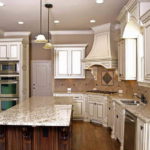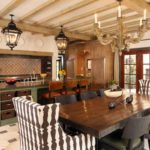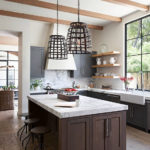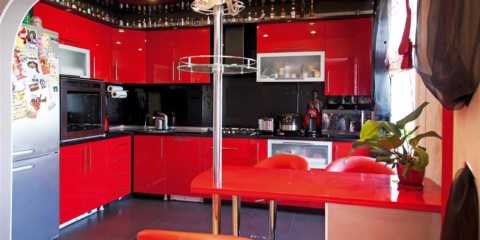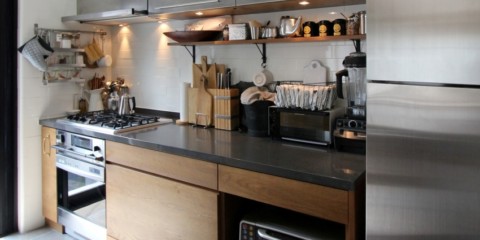 Kitchen
How to choose a comfortable and modern style of kitchen design
Kitchen
How to choose a comfortable and modern style of kitchen design
The warm sea, good-natured energy, emotionality beating over the edge, excellent refreshments - all this is cheerful and sunny Italy! Having once visited this blessed place, I want to certainly come back here again and again. To brighten up the expectation of the next meeting a little, you can create a small Italian corner at home, the kitchen is ideal for such an expression of feelings.

Thanks to the European sense of sophistication and centuries-old rich history, the Italian style in the interior of the kitchen leaves no one indifferent.
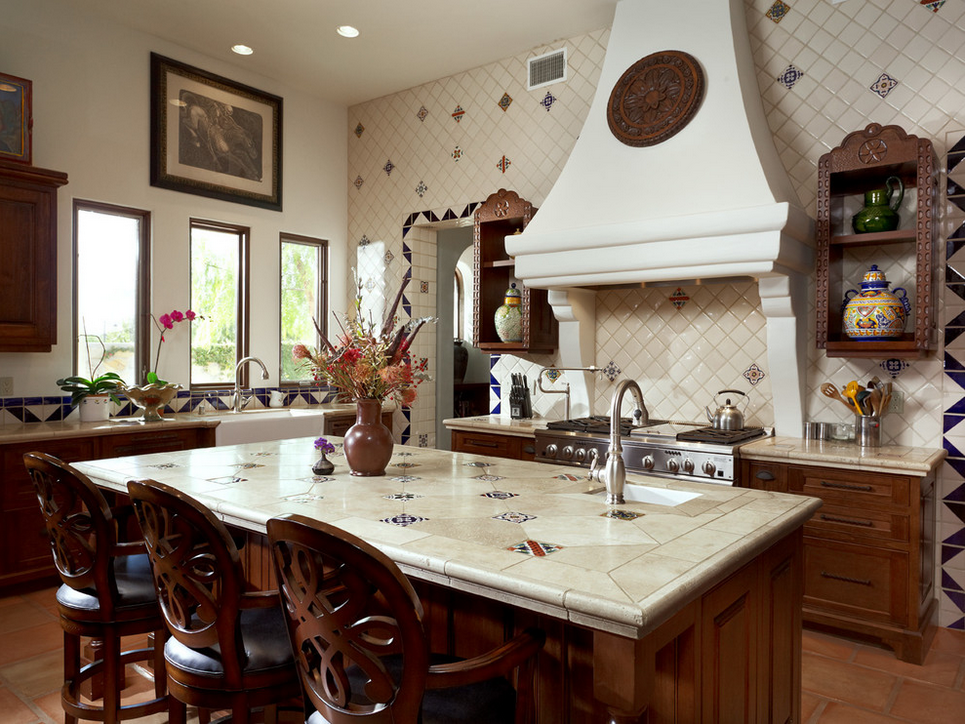
Italians are not only gourmets who have turned the cooking process into a real art, but also skilled designers who have managed to create an organic style.
Characteristics
Content
The style appeared and formed in the homes of ordinary Italians. The most distinctive originality of the new trend manifested itself in the central part of the country - Tuscany, therefore, initially the style was called not Italian, but Tuscan. In this area, even in the era of Holy Rome, the extraction of unique varieties of natural marble - snow-white Carrara and banded zipoline began. As a result, the basis of the Italian style was made up of natural materials - marble and wood.

This style embodies serenity and tranquility, comfort and family features.
Important! Glass in this direction is used very rarely, mainly in minor details.
Recognizable features were formed: household items were made on simple hand tools, without embellishments, special frills, at the intersection of classical symmetry and rude peasant simplicity. In addition to the outlines, in the Italian style there are several important features.

Italian-style cuisine is not only a palace luxury, but also a cozy country.
- A specific interior is easily identified by its characteristic color scheme. The palette consists of colors that have natural shades: from brown and green to sunny - orange and yellow intonations. In Italian cuisine there should be a lot of color - you can mix, dilute, pick up inflorescences from contrasting tones - a rich range allows you to experiment, be creative.
- Natural materials are a peculiar feature of style. Priority here is given entirely to wood and stone. Luxurious wooden furniture, a flooring made of unique varieties of marble, a countertop made of the same natural stone make up the usual set of elements. If artificial objects are brought into the interior, they should ideally imitate natural material.

On the Internet there are a variety of Italian cuisines, executed in both classical and modern style, from the photos of which it is impossible to look away.

From finishing to Italian furniture, a kitchen decorated in this style will be the dream of any housewife.
- Italian-style cuisine is always filled with numerous small items, cute trinkets that create a warm, warm atmosphere in the room. Interestingly, the abundance of all kinds of jars, drawers, an old fresco in the most unexpected place, a small fruit basket - all this does not need to be in strict order.A small "universal chaos" is absolutely appropriate here and absolutely does not violate the concept of interior in Italian.
- Headset items according to tradition should look solid, heavy, have a deliberately "aged" look from years of use.
- An indispensable attribute of the Italian-style kitchen is a dining table of impressive size, on thick massive legs (no lightweight plastic transformer!). In the Italian province, the tradition of living together for several generations is preserved, so a large family can only accommodate at a large countertop.

It combines family values, rainbow, the mentality of the country, historical features, simplicity and at the same time sophistication.
The main components
Each design direction has its own individual characteristics, according to which it can be easily determined.
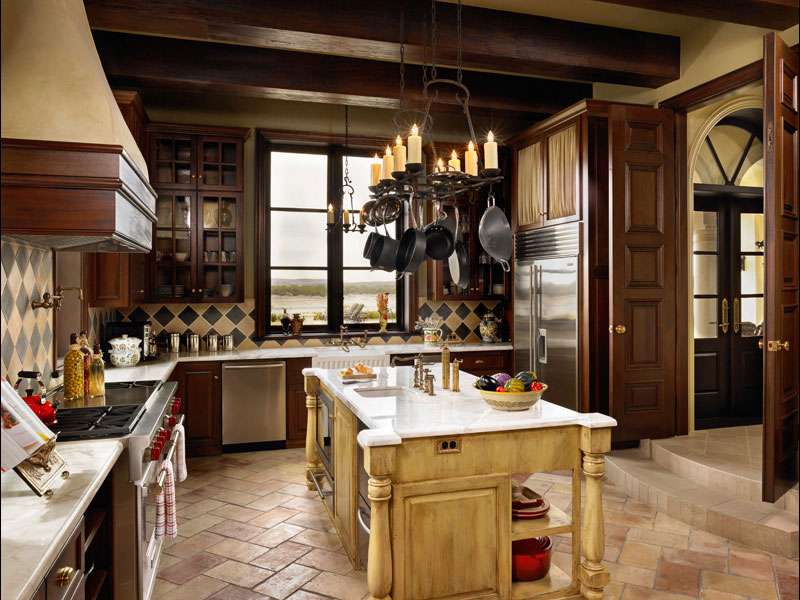
Like it or not, but Italy has always been famous for its masters and was considered a trendsetter.
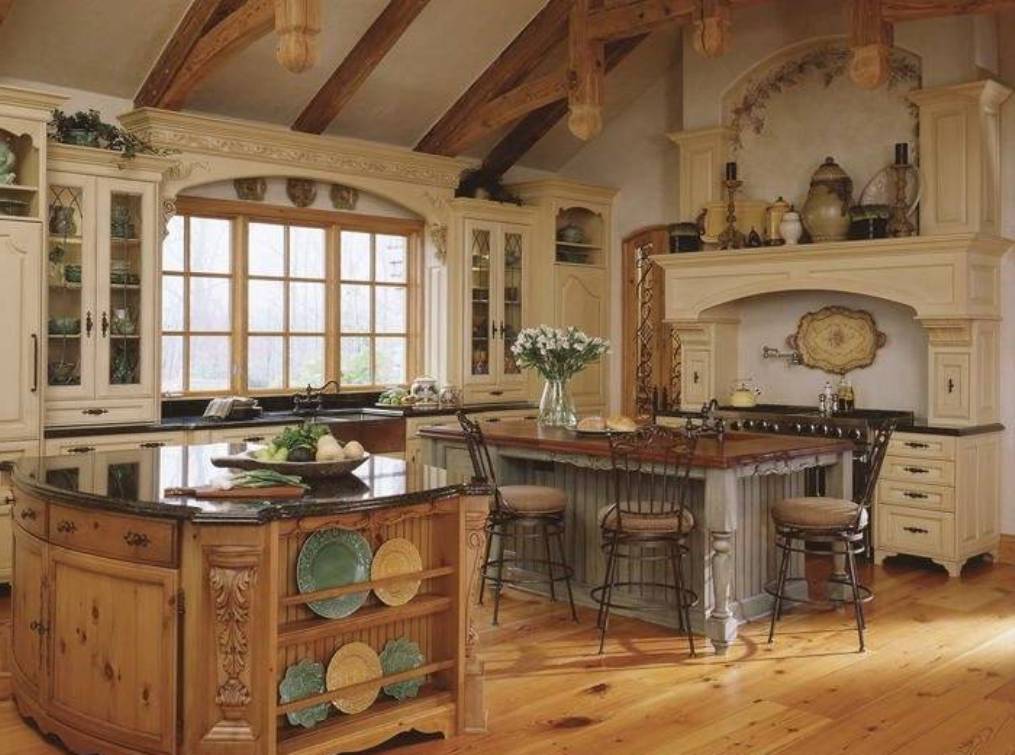
Refined creations of Italian designers delighted the whole world, from new collections of clothes to interior items.
In order to accurately recreate national motifs in the kitchen interior, you need to rely on objects and material that are basic in the Italian style:
- Furniture. This is a key element. Quality is a natural material in an elegant frame, the color scheme is natural tones of several shades, from milky light to deep brown intonations. Equipment - a lot of shelves, drawers, fixtures.
- Wall, ceiling space. The walls in the Italian family nest are multi-layered, they store traces of numerous rearrangements, the use of a variety of materials. For finishing Italian cuisine using ordinary materials: plaster, tile or mosaic, paint. Paneling is possible, but the coating should not go beyond the chosen design.
- In the tradition of style - the installation of wall beams, however, massive wooden floors are not entirely appropriate in a medium-sized apartment. Similar accuracy of execution can be observed in a country house, where the size of the room allows you to recreate the Italian style to the fullest extent possible.
- Decor Spaces not filled with furniture or paintings are decorated with beautiful little things, onions or garlic knits.

The Italian style in the interior of the kitchen always looks chic and elegant, fully conveying the temperament and traditions of Italy.
Kitchen a la Italia: design tips
The interior in Italian illustrates the national tradition of long-term family ownership of housing, when a change of generations was reflected in a change in design. Hence the multilayer coating, as if “accidentally” opening in the kitchen design in small fragments of masonry, cracked plaster.

Italian-style cuisine is one of the most sought after in the modern market.

The room, made in the Italian style, combines so incompatible things that it makes a strong impression on any visitor.
A traditional table in an Italian house is an unpainted board without polishing. The imitation of an old stone covered with a thin spider web of cracks and chips is popular in the Italian style. As an interesting option, a rustic coating imitating an untreated tree is used.

The palace chic and simplicity of the province, enduring traditions and modern spirit create an incredible atmosphere of Italian interior.
If the kitchen has high ceilings, wooden beams painted in dark colors must be arranged. Beam ceilings - a tribute to the historical interior, where such details were an indispensable attribute. Between them it was customary to install lighting devices.

The Italian-style kitchen fits perfectly into the classic interior of the apartment.
“Vegetable” nets will become an interesting decorative technique - in Italy it is customary to hang bundles of vegetables on ceiling beams in the kitchen.
Italian-style lighting is an indirect, dim light. Ceramic or metal lamps in retro style will soften, highlight color differences, emphasize the strength and monumentality of natural stone, wood. The central chandelier in Italian cuisine is located above the dining table; it is mounted on the ceiling on several chains.

After a long history, the Italian style has incorporated a variety of features.
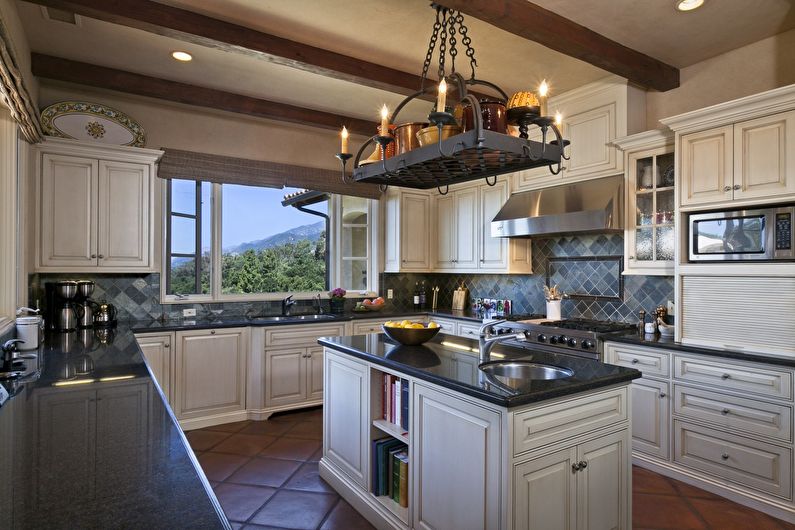
To decorate your premises and preserve the true spirit of Italy, you can combine various options.
The working area is decorated with a tile apron. The space near the hearth or hob is beautifully framed by a beautiful panel of still lifes with images of fruits, or landscapes.
Headset items, including wall cabinets, sideboards, are made of natural wood with various finishes.

When creating the Italian style in the kitchen very often use natural materials.
Materials and finishes
As for finishing materials, it can be argued that the Italian style in the interior of the kitchen chooses natural materials - wood, stone.

In connection with the variety of interior solutions, you can understand the history of the development of the Italian style in the interior of the kitchen.
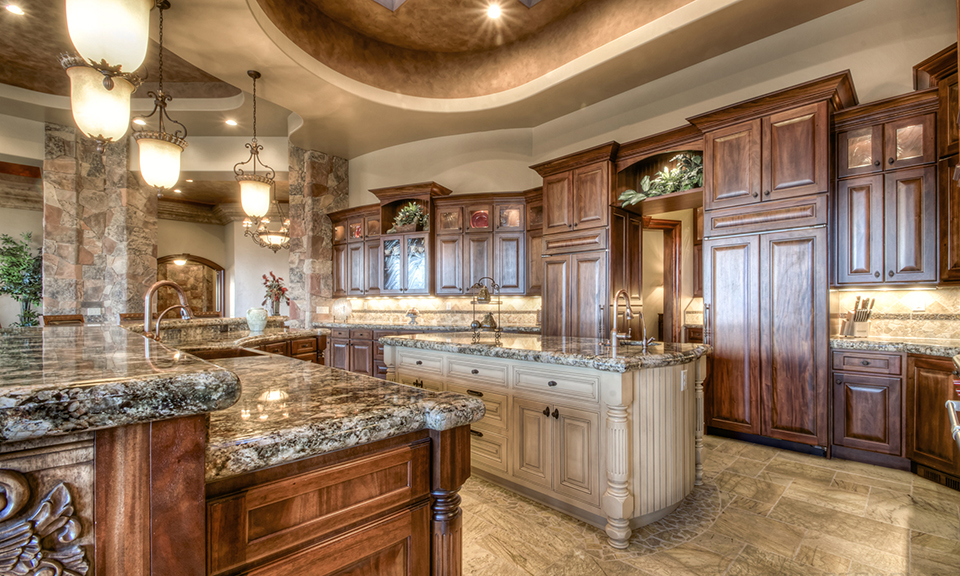
Distinguish between classic and modern styles, which have their own characteristics and features.
| Indoor Place | Type of material | Features |
| Floor | For centuries, there was a stone coating, more often - large plates of marble. However, such a material has significant drawbacks - the surface is slippery, quickly contaminated. | Modern interiors practice replacing stone with ceramic tiles, with imitation of natural material, with a non-slip surface. Some modern Italian-style designs allow the use of porcelain stoneware, terracotta tiles with Gothic inlay.
The tiles are chosen in small sizes, "under the stone", which has a pronounced antique look. Varnish, glaze for flooring is not allowed |
| Walls | The best choice in Italian style is neutral staining. If plaster is chosen for coating, it is washed away so that the color looks worn, faded. | You can decorate the open part of the wall with beautiful plaster moldings. If conditions permit, they elegantly decorate the room with brick or masonry. |
| Ceiling space | The ceiling is whitened or painted, if possible reinforcing the arch with wooden beams or a lighter material imitating wood. | Ideally, it requires not a flat standard territory, but a vaulted “tunnel” - a similar architecture is still typical for Italian cuisine.
The design is usually not painted, only covered with several layers of varnish. |
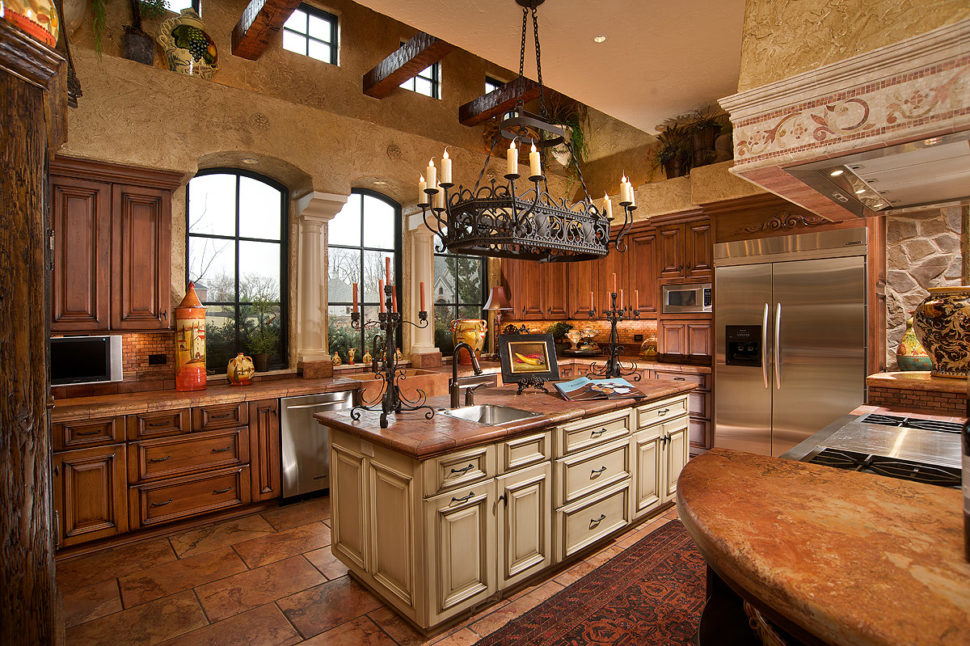
The necessary materials can be easily found on sale or pre-ordered for individual delivery.
Furniture: quality, decoration, placement
Italian cuisine is easily recognized by the furniture set. It can be described by three epithets: solid, solid, majestic. Furniture items are famous for a variety of colors, textures, and the use of natural wood. An expressive durability is provided by the massif of a tree.
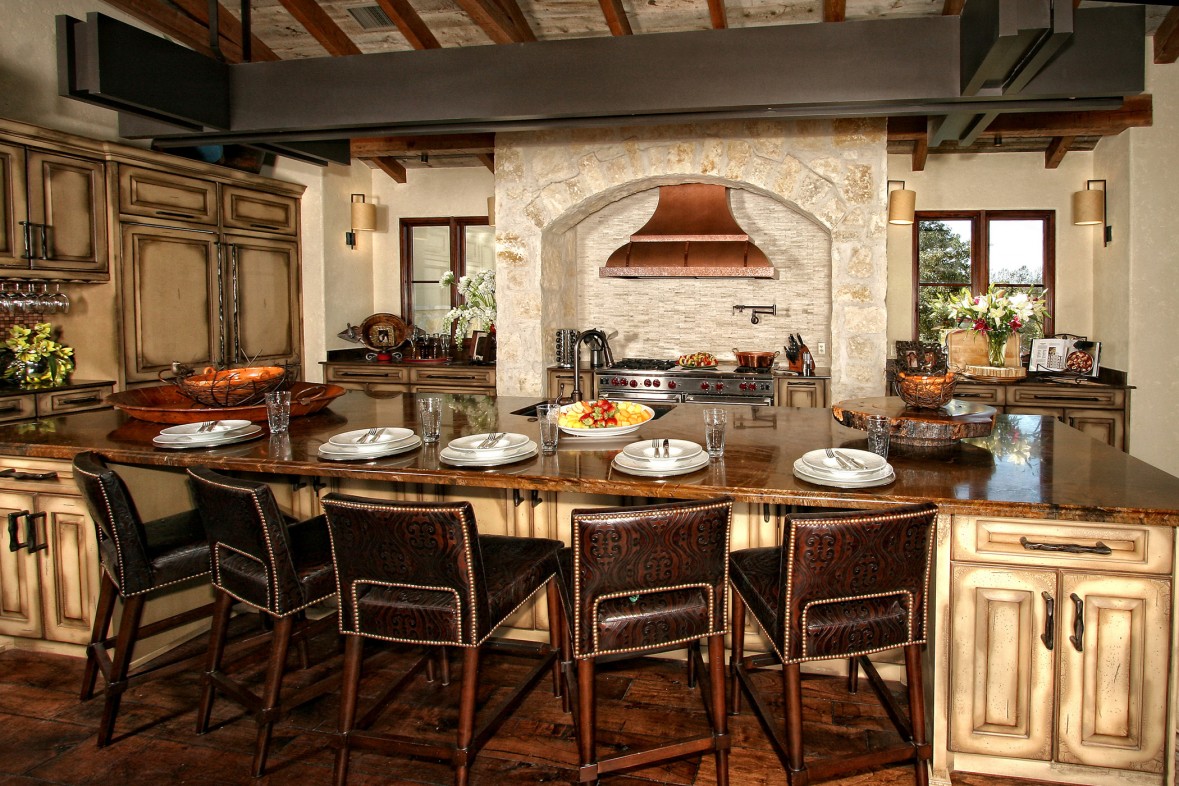
If you are a fan of the Italian style, then you have an extraordinary taste.

Classical features in the interior of Italian cuisine originate from the era of antiquity.
Features of furniture in the Italian style include:
- Careful planning when placing items;
- Neat, artful finish;
- Use of natural material;
- Color combination of textures and shades;
- An interesting combination of wood species, tinting, woody pattern;
- Color contrast: pale blue tone + juicy green color, yellow, red, orange shades, lavender;
- Instead of stools and chairs - benches, a wooden countertop is replaced with a stone one.
- The shape is extremely ergonomic.

The classic interior of Italian cuisine is always a swing and luxury.
The furniture is quite expensive, but its original design, magnificent appearance completely justify the cost.
Decor Features
To design a room in the Italian style, you do not need to purchase expensive items: a cozy entourage is created by the simple everyday things of everyday use. The “Italian" spirit will be complemented by small paintings with images of local landscapes, mosaic panels, hand-painted.
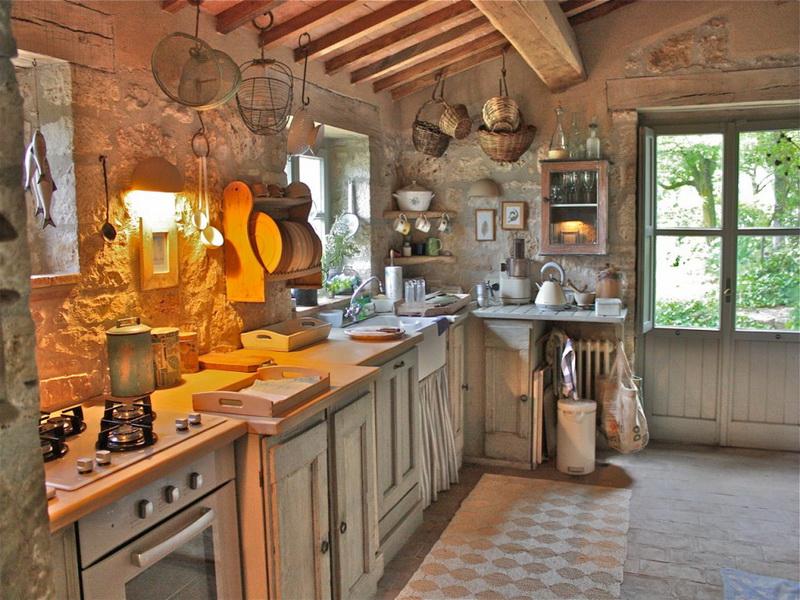
As decorative elements, copper pots, clay pots, flowerpots, and wine bottles in a rope braid are quite in place.
If possible, you can place authentic souvenirs from Italy in the kitchen, small accessories - artificial olives, a bottle of olive oil, artichokes, national herbs, small pretty trinkets.

Many accessories fill the kitchen room with life.
VIDEO: Design of the kitchen in the Italian style.









